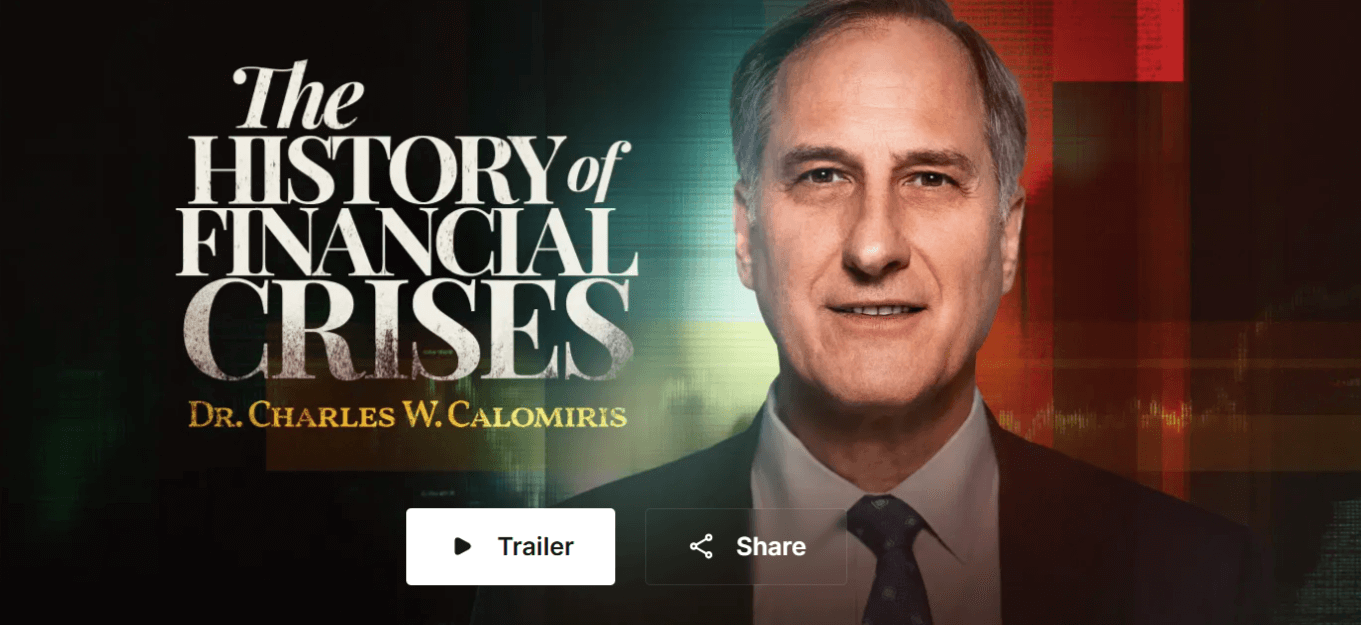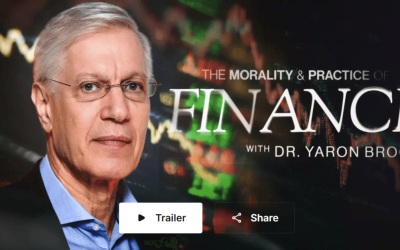🌟 New Year Offer 🌟
Celebrate 2025 with 30% OFF on all products! Use code: NEWYEAR2025. Hurry, offer ends soon!
The lectures examine how political decisions and institutional structures fundamentally shape financial system stability and crisis vulnerability.
File Size: 10.393 GB.
Format File: 8 MP4, 8 SRT, 9 TXT.
Peterson Academy – Charles W. Calomiris – The History of Financial Crises

Dr. Charles Calomiris
Financial economist
In The History of Financial Crises, a ten-hour course, Dr. Charles Calomiris explores the history, causes, and patterns of financial crises from ancient Rome to modern times. The lectures examine how political decisions and institutional structures fundamentally shape financial system stability and crisis vulnerability. Through detailed analysis of historical cases—including the 1929 stock market crash and modern global crises—the course highlights the factors that consistently contribute to financial instability. It concludes by identifying recurring patterns of failure in economic systems and emphasizes the need for reform to build more resilient financial structures.
Lectures

1. The Anatomy of a Crisis

2. Shaping Financial Systems
In lecture two, we learn about John Law’s financial innovations in Scotland and France, focusing on his land bank proposal and the Mississippi bubble, while comparing it to England’s South Sea bubble. The lecture examines how sovereign funding needs and war between Britain and France shaped their distinct financial systems, particularly highlighting the contrasting development of banking in Scotland versus England and Wales. The discussion concludes by analyzing how political equilibrium and sovereign interests fundamentally determine financial system development and stability.

3. The US and Canada
In lecture three, we analyze the striking differences between the banking systems of the United States and Canada over the past 200 years, with the US experiencing 17 major banking crises compared to none in Canada. Dr. Calomiris explores the role of unit banking, real estate risk tolerance, and political factors in shaping these divergent outcomes, emphasizing the importance of understanding the historical and constitutional contexts that allowed these differences to endure.
4. US Banking Evolution
In lecture four, we explore the history of financial crises in the United States from the 1820s to the 1980s, focusing on the unique choice of the US to build a banking system based on locally isolated unit banks. The lecture continues by comparing the US experience with Canada’s. The discussion also analyzes how market discipline functioned differently under various banking structures, and examines the gradual shift away from unit banking in the US starting in the 1980s.
5. Bank Risk Management
In lecture five, we examine how banks manage risk through funding sources and asset allocation, particularly exploring their responses to economic pressures during the 1920s and 1930s. We analyze how banks historically used balance sheet tools—adjusting equity-to-asset ratios and cash holdings—to maintain depositor confidence through market discipline, demonstrating that bank failures during the Great Depression primarily reflected fundamental weaknesses rather than irrational panic. The lecture ends with the 1920s Florida land boom, investigating the factors that contributed to its successes and failures.
6. Crash and Depression
In lecture six, we study the stock market crash of 1929, examining its relationship (or lack thereof) with the Great Depression and analyzing whether the market boom was fundamentally justified. The lecture presents evidence that the stock price increases of the 1920s were largely driven by technological innovation and patent development. The discussion concludes by highlighting how the Federal Reserve deliberately triggered the crash through monetary tightening, despite having a poor understanding of market fundamentals, raising important questions about central bank discretion in targeting asset markets.
7. Subsidies and Bailouts
In lecture seven, we look at the history and impact of risk subsidies in the financial crises of the 20th century, focusing on deposit insurance, agricultural land credit subsidies, and residential mortgage subsidies. The lecture examines how these subsidies, intended to help certain groups and sectors, often led to excessive risk-taking by banks and ultimately contributed to financial instability and costly bailouts.
8. Need for Reform
In our eighth and final lecture, we investigate the global financial crises that have occurred since 1970. We learn about the concept of “the two gorillas”—bank protection and residential real estate subsidization—as key drivers of instability. The discussion covers crises in Mexico, Korea, the US, and Spain, highlighting how political incentives and misguided policies contributed to these events. Dr. Calomiris concludes our course by presenting statistical evidence on recurrent themes of failure in economic systems, and emphasizes the need for reform in the face of persistent political obstacles.
Course Features
- Lectures 0
- Quizzes 0
- Duration 10 weeks
- Skill level All levels
- Language English
- Students 82
- Assessments Yes










